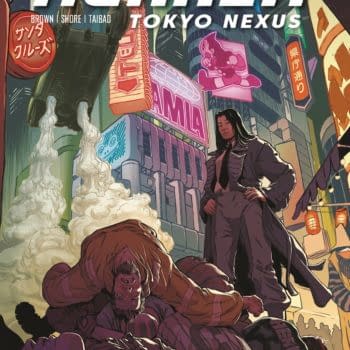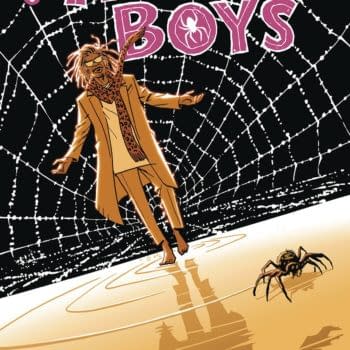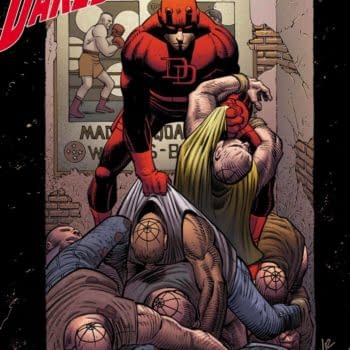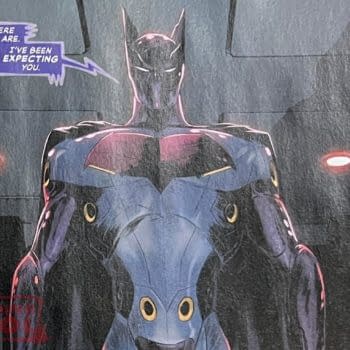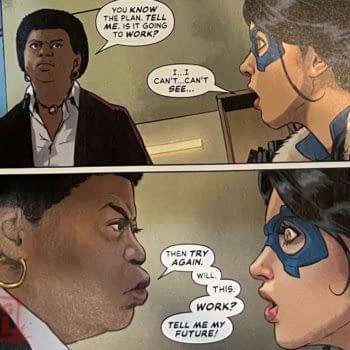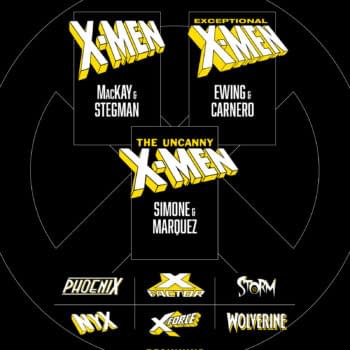Posted in: Comics | Tagged: pacific rim
Your Brief History Of Giant Robots – Adi Tantimedh's Look! It Moves!
Adi Tantimedh writes;
So Guillermo del Toro's Pacific Rim opened last weekend and there are some people who think it's a rip-off of Transformers.
Those people are idiots who deserve to be laughed at, but it did remind me that the giant robot genre was always a bigger deal in Asia than in the West, and it was time to write a basic history so you know where it all came from.
It all started in Japan, of course. In a confluence of Japan's embracing of the idea of technological progress and creating pop fiction for little boys, 1956 saw the creation of Tetsujin 28, the first giant robot manga. It was about a 10-year-old boy who inherits the 3-story-high robot his scientist father created and uses it to fight crime and evil robots because, hey, what else was a kid going to do with it?
For every little boy who got into Tetsujin 28, it made sense: if you were a child who felt tiny and powerless, technology makes it better when you have a big robot you can use by remote control to smash things with. And the entire giant robot genre has always been primarily aimed at little boys. In the US, the anime series was shown on TV in the Sixties under the title Gigantor, and continues to spawn new anime series and movies, both animated and live action, to this day.
The genre of the giant robot controlled by a pilot inside its body was really established in 1972 by manga creator Go Nagai when he created Mazinger Z, which also set the template for genre conventions still used today. Mazinger Z was a 10-storey-high robot that the teenage grandson of its inventor can control by piloting a hovercraft that connects to its head to serve as its brain. The standard plot of the genre would involve the hero and his friends would use the robot to fight evil giant robots sent by a bad guy, either an alien invading force or secret evil organisation out of James Bond, only with giant robots at their disposal.
Mazinger Z had a jet wings that enabled it to fly and its arms could be fired as missiles. The hero's girlfriend also piloted a female-shaped robot whose tits were missiles that could be fired. His fat best friend piloted a goofy fat giant robot that was almost always useless in battle. The manga and anime series was popular enough to spawn a sequel The Great Mazinger, which featured a new, upgraded giant robot with a new cast of characters and plot, and spinoffs like UFO Robot Grendizer, MazingKeiser and numerous crossovers with Go Nagai's other creations like his demonic superhero Devilman.
The 1970s was a boom time for giant robots, and after Mazinger Z, the transforming giant robots that would end up inspiring The Transformers were created. There was Ken Ishikawa's Getter Robo, which featured wild, streetfighting teenage heroes who piloted aircraft, tanks and seacraft that combined to become one giant fighter robot. This also inspired the creation of Voltron in the 1980s.
Other series that featured vehicles that transformed into giant robots in the 70s included Brave Raideen (which was the first to feature the pilot wearing a neurosuit to create the robot's movement as seen in Pacific Rim), Gaiking (where the head of a giant dragon robot would detach and itself become a giant robot) and many others, including the first giant robot that traveled around as an 19-wheeler truck in disguise, a clear precursor to The Transformers'Optimus Prime in the 1980s. Many of these action figures, including Mazinger, would be licensed by Mattel to form the Shogun Warriors toy line later in the 70s, which would be when kids in the west were first exposed to them. And the Shogun Warriors ended up informing the creation of the Transformers in the 1980s.
The standard genre conventions up to that point had scientists who somehow managed to build these giant robots piloted by stoical teens and you never questioned how any single scientist could afford to do that and form an independent giant robot defense force with its own secret base and hangar all on his own.

There were various other series and franchises, but it wasn't until Neon Genesis Evangelion in 1995 that changed the genre and took it to another level. An extremely personal vision by creator Hideaki Anno, it was as if Ingmar Bergman expressed his personal angst, depression and existential crisis through giant robots and the detritus of Japanese pop culture and Gnostic mysticism instead of religion. It could not have come about without the likes of Mazinger and Gundam coming before it. Here, the teenagers forced to pilot the giant robots are complete emotional wrecks traumatised by the experience of fighting giant angelic monsters, and the giant robots aren't actually robots – they're actually giant hybrid clones of the pilots' dead mothers intermingled with angel DNA, and the cockpits are in effect wombs complete with amniotic liquid to suspend the pilots in. So anyone who thinks Pacific Rim is a rip-off of Evangelion is also an idiot.

All this brings us right up to Pacific Rim, Guillermo del Toro's tribute to both the giant robot and kaiju genres by mashing them together. It's clearly a Western homage to the fifty-plus years of Japanese giant robot series, and to me, it's interesting to see how it's filtered through Western designers and screenwriters. He brings the insane budgets of Hollywood to portray the apocalyptic weight and awe and terror of what giant robots fighting would be like in live action, as well as the pulpy but heartfelt human melodrama at the heart of every giant robot saga. To complain about the excessive pulpiness of the human characters is missing the whole point and appeal of giant robot stories when the giant robots aren't out fighting. The Jaeger robots in the movie are a mix of Japanese and Western designs, since Japan has always liked the designs of their giant robots to be sleek and elegant, adapted from the looks of everything from samurai armor to sports uniforms while Western designs of mechs and giant robots have always been more clunky, tank-like and utilitarian – you can see this when you compare Japanese giant robots from anime to Western versions like the 80S cult B Movie Robotjox, Transformers and video games like Hawken and the upcoming Titanfall.
So there you have it: your quick, condensed history of an entire genre to fill you in on the context out of which Pacific Rim came out. You can find clips of every example cited here on Youtube, and other examples not mentioned here. Ultimately, giant robots are a big pop culture business, selling loads of comics, toys and merchandising. Every kid in Asia who's been alive since the Sixties knows exactly what the appeal of this movie is, and will be seeing it because it's part of their cultural heritage. The franchises are worth millions in Asia, even if Westerns are less familiar with them, and Pacific Rim knows that. It's going to be much more popular in Asia than in the US, a love letter that seeks to give back the pleasures and awe and terror and child-like glee and wonder of discovering your first giant robot love when you were a kid.
Piloting a giant laptopat lookitmoves@gmail.com
Follow the official LOOK! IT MOVES! twitter feed at http://twitter.com/lookitmoves for thoughts and snark on media and pop culture, stuff for future columns and stuff I may never spend a whole column writing about.
Look! It Moves! © Adisakdi Tantimedh














